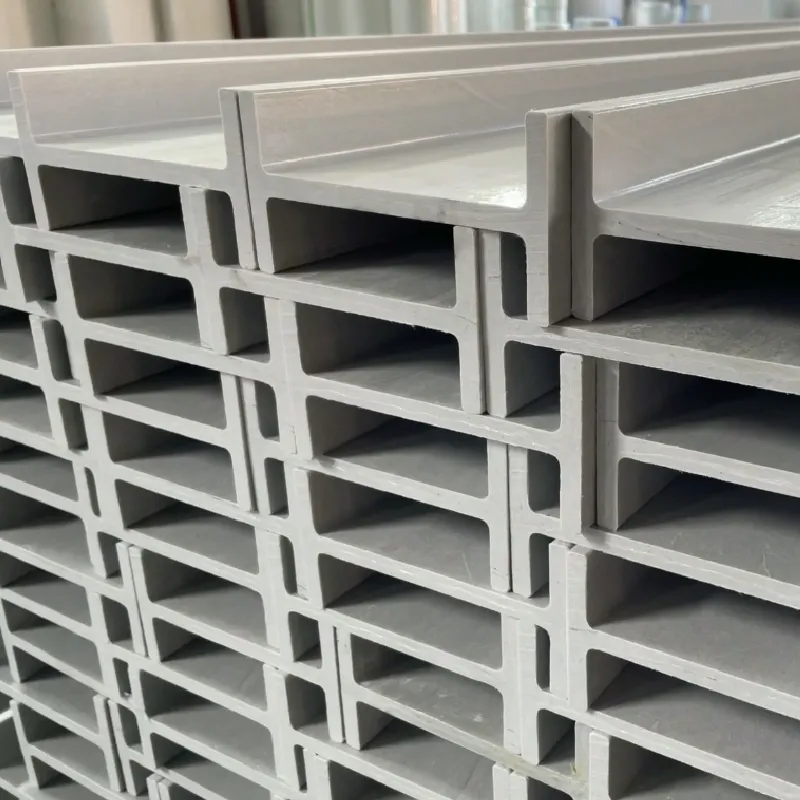loading...
- No. 9, Xingyuan South Street, Dongwaihuan Road, Zaoqiang County, Hengshui, Hebei, China
- admin@zjcomposites.com
- +86 15097380338
- Welcome to visit our website!
frp angle bar
Understanding FRP Angle Bars Applications and Benefits
Fiber Reinforced Polymer (FRP) angle bars are innovative construction materials that are increasingly gaining popularity due to their superior properties and versatility in various applications. Composed of a polymer matrix reinforced with fibers, typically glass, carbon, or aramid, FRP angle bars present a unique combination of strength, lightweight, and corrosion resistance, making them an excellent choice for numerous engineering and construction projects.
What Are FRP Angle Bars?
FRP angle bars are structural elements with an L-shaped cross-section, similar to traditional steel angle bars but made from composite materials. The design allows for easy integration into diverse structures, providing additional strength and stability where needed. The manufacturing process for FRP angle bars involves layering the reinforcing fibers within the resin matrix and curing the composite material to create a robust product that can withstand various environmental conditions.
Advantages of Using FRP Angle Bars
1. Corrosion Resistance One of the most significant advantages of FRP angle bars is their inherent resistance to corrosion. Unlike traditional metal components, which can rust and deteriorate over time, FRP materials do not corrode when exposed to moisture, chemicals, or harsh environmental conditions. This makes them ideal for use in marine environments, chemical plants, and wastewater treatment facilities.
2. Lightweight FRP angle bars are much lighter than their steel counterparts. This characteristic simplifies transportation and installation, reducing labor costs and the need for heavy machinery. The lightweight property also helps in designing structures that require less foundational support, further enhancing efficiency.
3. High Strength-to-Weight Ratio Despite being lightweight, FRP angle bars exhibit an impressive strength-to-weight ratio. This quality allows them to bear significant loads while minimizing overall structural weight, making them suitable for applications where weight savings are crucial.
4. Durability FRP angle bars possess excellent durability, with resistance to environmental factors like UV radiation and extreme temperatures. This longevity translates to lower maintenance costs over time, as structures built with these materials will require less frequent repairs or replacements.
frp angle bar

5. Versatile Applications FRP angle bars can be utilized in a variety of applications across different industries. They are employed in building frameworks, bridges, signage, guardrails, and even as components in electrical towers. Their adaptability makes them an attractive option for engineers and architects looking to innovate and improve traditional designs.
Applications of FRP Angle Bars
The versatility of FRP angle bars allows for their effective use in numerous fields, including
- Civil Engineering FRP angle bars can be used in constructing bridges and retaining walls, where strength and corrosion resistance are vital. Their ability to withstand harsh environmental conditions makes them a preferred choice for coastal and offshore structures.
- Infrastructure In the construction of highways and railways, FRP angle bars can be integrated into guardrails and barriers due to their lightweight yet durable nature. They provide safety features while being easy to install and maintain.
- Industrial Uses Chemical plants and power generation facilities often require materials that can resist corrosive substances. FRP angle bars fulfill this need, offering a reliable solution for structural support within these settings.
- Renewable Energy In wind energy applications, FRP angle bars are used in the construction of turbine towers and support structures, providing strength without the burden of excessive weight.
Conclusion
As we continue to seek improved materials for construction and engineering applications, FRP angle bars stand out as a superior choice. Their corrosion resistance, lightweight nature, and high strength make them ideal for modern construction challenges. As more industries recognize the benefits of using FRP materials, it is likely that the adoption of FRP angle bars will grow, paving the way for more sustainable and durable structures in the future. Whether in building bridges, enhancing industrial facilities, or supporting renewable energy projects, the utility of FRP angle bars is undeniably impressive, representing a significant advancement in material science.
-
GRP Structures: The Future of Lightweight, High-Performance EngineeringNewsJun.20,2025
-
FRP Water Tank: High-Performance Storage for Corrosive and Clean Water SystemsNewsJun.20,2025
-
FRP Square Tube: The New Industry Standard for Chemical and Structural ApplicationsNewsJun.20,2025
-
FRP Pultruded Profiles: The Ultimate Choice for Lightweight Structural StrengthNewsJun.20,2025
-
FRP Handrails: The Safer, Smarter, and Stronger Choice for Modern InfrastructureNewsJun.20,2025
-
FRP Grating: The Smart Solution for Durable, Lightweight Industrial FlooringNewsJun.20,2025
-
Why Choose a Galvanized Water Tank for Your Storage NeedsNewsMay.21,2025
